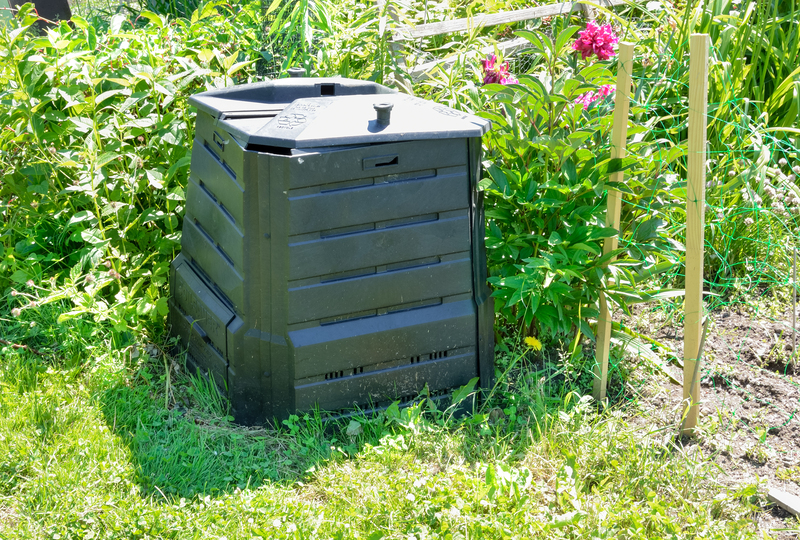Smart Ways to Handle PPE Waste for a Cleaner Community
In recent years, the use of Personal Protective Equipment (PPE) has dramatically increased worldwide, playing a vital role in public health and safety. However, the widespread use of masks, gloves, and other protective gear also poses significant environmental challenges. Discarded PPE waste is now a common sight in urban and rural environments, adversely affecting communities and ecosystems alike. In this comprehensive article, we explore smart and sustainable ways to manage PPE waste, ensuring a cleaner and healthier community for all.

Why Proper PPE Waste Management Matters
PPE (Personal Protective Equipment) waste comprises disposable masks, gloves, face shields, gowns, and other related items used to prevent the spread of infection. While PPE is indispensable for maintaining public health during crises such as pandemics, its improper disposal leads to severe environmental and health risks.
Environmental Impact of Improper PPE Disposal
- Pollution: PPE waste made of plastic materials like polypropylene does not biodegrade easily. Improper disposal leads to the accumulation of plastics in soil and water bodies, posing threats to wildlife and aquatic life.
- Microplastics: Over time, PPE items break down into microplastics, which harm marine ecosystems and enter the human food chain.
- Sanitation and Public Health Risks: Littered PPE can harbor infectious agents, increasing the risk of disease transmission among communities and sanitation workers.
- Visual Pollution: Discarded masks and gloves in streets and parks degrade the aesthetics of neighborhoods and public spaces.
Understanding the Types of PPE Waste
Before implementing effective strategies, it's crucial to recognize the various forms of PPE waste. Typically, PPE waste is categorized as:
- Medical PPE Waste: Used in hospitals, clinics, and healthcare settings, often contaminated with biological substances.
- Community PPE Waste: Generated by individuals in public places -- such as masks and gloves used during commutes or shopping.
- Workplace PPE Waste: Includes items used in offices, factories, and businesses for occupational safety.
Smart Strategies for Managing PPE Waste
With the right approach, communities can handle PPE waste efficiently, reduce environmental pollution, and minimize health hazards. Consider these smart ways to handle PPE waste for a cleaner community:
1. Raise Public Awareness and Education
It's essential to educate the public about the risks of improper PPE disposal. Awareness campaigns can inform community members on how to correctly dispose of personal protective items. _Effective communication can be facilitated through:_
- Informational posters in public places
- School and community workshops
- Social media campaigns with clear instructions
- Community clean-up events highlighting PPE waste
The more people understand the importance of proper PPE waste handling, the more likely they are to participate in maintaining cleaner environments.
2. Designated PPE Waste Bins
Installing specialized PPE waste collection bins in high-traffic areas encourages individuals to discard their used masks, gloves, and other items responsibly. These bins should be:
- Clearly labeled and color-coded for easy identification
- Placed in strategic locations -- such as entrances of buildings, shopping malls, transport hubs, parks, and hospitals
Frequent collection and regular sanitization of PPE bins further reduce the risk of contamination and accidental spread of diseases.
3. Promote Reusable and Eco-Friendly PPE Alternatives
Another smart way to tackle PPE waste is by encouraging the adoption of reusable masks and gloves made from sustainable materials. Communities should:
- Opt for cloth masks with multiple layers, following health guidelines
- Educate users about proper cleaning and maintenance of reusable PPE
- Encourage local production of environmentally-friendly PPE
Promoting reusable options not only reduces waste generation but also cuts down on costs and conserves resources.
4. Implement PPE Waste Segregation
Effective segregation is key to safe and organized PPE waste management. At both households and workplaces, used PPE should be separated from regular household garbage. Tips to enhance PPE waste segregation include:
- Using dedicated bags or containers for PPE waste
- Clearly marking containers to avoid confusion
- Providing easy-to-follow guidelines for residents and employees
Segregated PPE waste ensures safer handling for waste collectors and proper treatment at waste management facilities.
5. Safe Collection and Transportation Practices
Waste handlers must be protected during the collection and transport of PPE waste. Best practices include:
- Ensuring collectors wear protective clothing, masks, and gloves
- Regular disinfection of collection vehicles and containers
- Avoiding direct manual contact with PPE waste
- Immediate sealing and labeling of PPE waste bags
Ensuring the safety of waste collectors and sanitary workers is a critical aspect of any PPE waste management strategy.
6. Proper Disposal and Treatment of PPE Waste
Once collected, PPE waste should be sent to authorized treatment facilities. Several smart disposal methods are:
- Incineration: High-temperature incineration destroys pathogens effectively and reduces waste volume. However, proper emission controls are necessary to minimize air pollution.
- Autoclaving: Steam sterilization in autoclaves disinfects contaminated PPE safely before it is sent to landfills or recycling centers.
- Chemical Disinfection: Certain chemicals can be used to neutralize pathogens in PPE waste, making it safer for further handling.
7. Encourage PPE Waste Recycling and Upcycling
Innovative recycling and upcycling initiatives can turn PPE waste into valuable resources. While not all PPE is recyclable due to contamination risks, technologies are emerging to:
- Convert polypropylene masks and gowns into building materials (bricks, tiles)
- Recycle uncontaminated PPE plastics into consumer products and packaging
- Transform PPE waste into energy using waste-to-energy plants
Supporting research and pilot projects in PPE waste recycling is a smart step toward sustainability.
8. Involve Local Government and Policy Makers
Collaboration with local authorities is essential for large-scale PPE waste solutions. Governments can:
- Enact regulations for mandatory PPE waste segregation and proper disposal
- Provide resources and funding for PPE waste collection infrastructure
- Monitor adherence to PPE waste management guidelines in communities, businesses, and healthcare facilities
Public-private partnerships can also lead to innovative strategies that benefit both the community and the environment.
How Communities Can Take Action
Building a cleaner and safer community is a shared responsibility. There are actionable steps that every resident, organization, and institution can take to curb PPE waste pollution:
- Adopt a zero-littering culture: Dispose of PPE in marked bins, and never leave them in public spaces or natural habitats.
- Volunteer for clean-up drives: Join or organize community events focused on collecting and safely disposing of scattered PPE.
- Support local green businesses: Purchase reusable and eco-friendly PPE products whenever feasible.
- Advocate for improved waste management policies: Encourage authorities to introduce stricter penalties for littering PPE and invest in better infrastructure.
Everyone's small contribution adds up to a significant impact on community cleanliness and public health.
Latest Innovations in PPE Waste Management
The surge in PPE waste has inspired creative and technological advancements in sustainable waste handling. Some recent innovations include:
- Smart PPE disposal bins equipped with sensors to monitor fill levels, reducing overflow and optimizing collection routes.
- Biodegradable PPE products made from plant-based materials, which break down more quickly in landfills.
- Advanced recycling technologies using chemical processes to convert complex plastic waste into reusable resources.
- Awareness apps that educate users about nearby PPE disposal facilities and eco-friendly PPE options.
Encouraging the adoption of such technologies can propel communities toward truly sustainable PPE waste practices.
Overcoming Common Challenges in PPE Waste Handling
While the path to cleaner communities is clear, several obstacles must be addressed:
- Lack of infrastructure: Inadequate PPE waste bins and collection systems can hinder effective disposal efforts.
- Public apathy: Without sufficient public buy-in, even the best strategies may underperform.
- PPE cost and accessibility: Eco-friendly PPE alternatives may not always be affordable or readily available.
- Disposal workers' safety: Protecting those who handle PPE waste is often overlooked, but absolutely critical.
Addressing these hurdles requires ongoing collaboration among communities, policymakers, businesses, and environmental organizations.
Conclusion: Towards a Cleaner, Safer Future
Smart handling of PPE waste is essential for building cleaner, healthier, and more resilient communities. With collective efforts -- from individuals adopting zero-littering habits to governments investing in infrastructure and innovation -- we can curb the environmental impact of PPE and safeguard public health.
As PPE use continues in various settings, embracing sustainable waste management is no longer optional. By educating the public, improving collection systems, encouraging recycling, and supporting policy changes, our communities can set a new standard for cleanliness and responsibility.
Let's commit today to smart PPE waste management -- for our neighborhoods, our environment, and generations to come!

FAQs About Smart PPE Waste Management
What is the best way to dispose of used masks and gloves at home?
Place used masks and gloves in a separate, sealable bag or container before disposing of them with your regular trash. If your city has a special PPE waste bin, use it. Always wash your hands thoroughly after handling used PPE.
Can PPE waste be recycled?
Certain types of PPE, such as N95 masks made of plastic fibers, can potentially be recycled with specialized facilities. However, due to contamination risks, most local recycling programs do not accept PPE waste in the regular bin. Check with your local authorities for current guidelines.
How can businesses help reduce PPE waste?
Businesses can provide reusable PPE options, educate staff about proper disposal methods, and collaborate with local waste firms for safe PPE collection and treatment.
Are biodegradable PPE products effective?
Biodegradable PPE made from plant-based polymers is designed to break down more rapidly in industrial composting setups. Effectiveness can vary, so always ensure products meet relevant safety and environmental standards.
Remember:
- Every effort counts in keeping our community clean and safe
- Proper PPE waste management protects both people and the planet
Let's act smart today for a brighter, cleaner tomorrow!